The Missouri River is the longest river in the United States. It flows for over 2,000 miles, beginning in Three Forks, MT, and joining with the Mississippi River in St. Louis, MO. This body of water is sometimes called the “Big Muddy,” due to the enormous amount of sediment that flows through the river system.
The Missouri River has a fascinating history that dates back thousands of years. This body of water is an important source of life in the Great Plains, providing opportunities for fishing, transportation, trade, and more. Let’s explore this historic river and everything it has to offer.
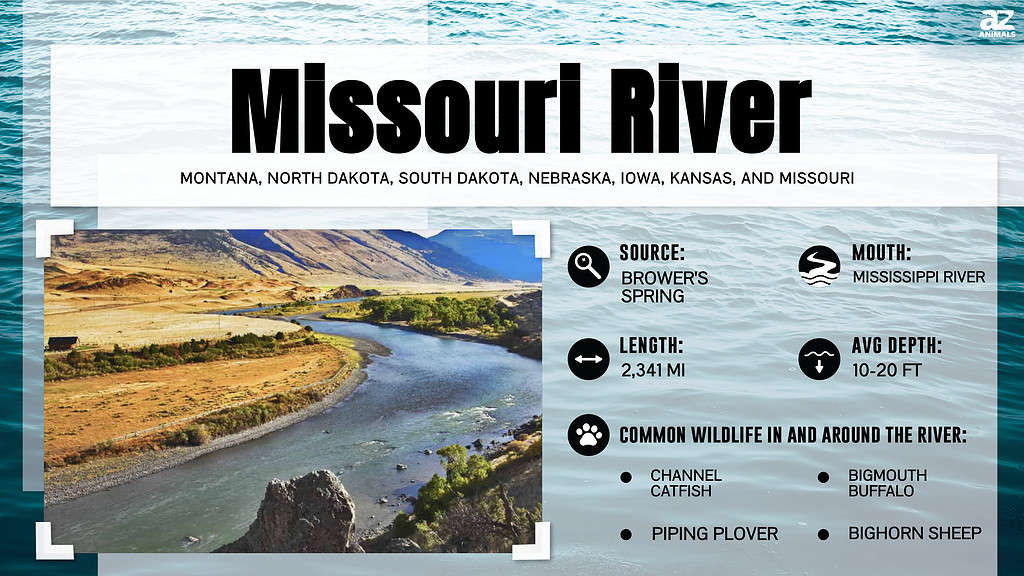
History
The documented history of the Missouri River by white Europeans dates back to June 1673, according to the Bureau of Reclamation. French explorers Louis Joliet and Father Jacques Marquette passed by the mouth of the river on their voyage down the Mississippi in hopes of reaching the Pacific Ocean.
Of course, European explorers were far from the first people to witness this body of water. The Missouri River has served as a source of life for people for over 12,000 years. Records of the first people living along the Upper Missouri Watershed date back to 1010 B.C.
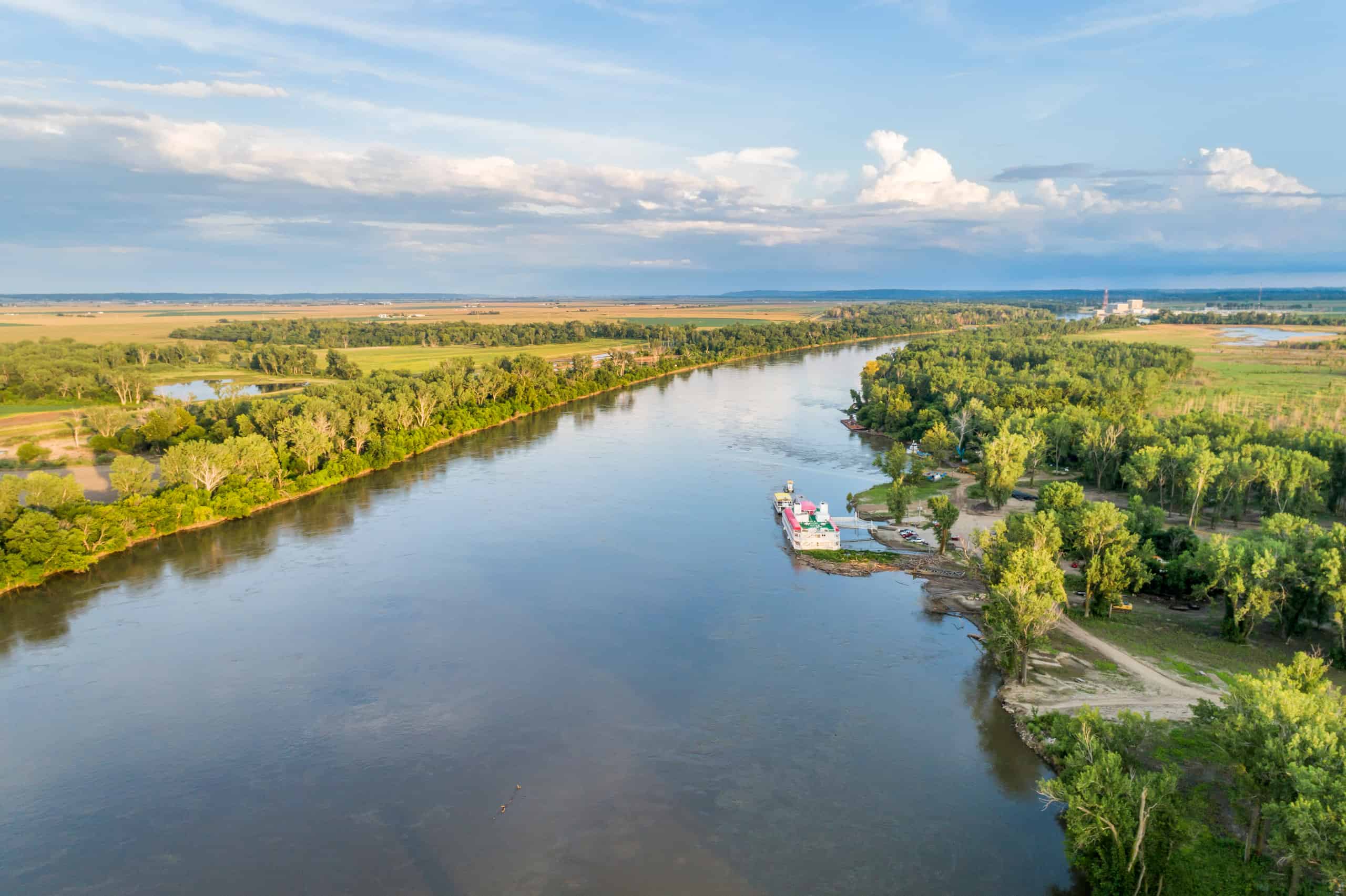
The Missouri River has been a source of life for thousands of years.
©marekuliasz/Shutterstock.com
Several Native American nations also made their home along the river, using it for food, transportation, and a hub for commerce. A few of the major tribes that lived along the Missouri River included the Missouria, Omaha, Lakota, and Blackfeet.
Records of the abundance of game animals for fur trapping and trade along the Missouri River date back to Lewis and Clarke’s 1806 expedition, writes Missouri Life Magazine. The pair reported that the land was teeming with beavers in particular, whose fur was highly sought after thanks to its waterproof nature. For decades men traveled up the Missouri to trap or trade with Native American tribes.
Size
The Missouri River is the longest river in the United States, with a total length of 2,341 miles (3,767 km). The river has hundreds of tributaries. Some of the most significant tributaries include the Yellowstone, Platte, and Osage Rivers.
The width of the Missouri River varies at different points. At its widest points, the body of water spans over 13 miles, though it’s difficult to measure an exact number.
While it’s equally difficult to find the narrowest part of the river, National Park Services point to the Big Bend of Missouri in South Dakota. The narrowest part of the neck is estimated to be approximately 1,285 yards (3,855 feet) wide.
Depth
The depth of the Missouri River varies, but on average it is around 10-20 feet deep. The river’s deepest point, near New Orleans, is estimated to be around 2,000 feet deep.
The Missouri River has earned the nickname “Big Muddy” due to the large amounts of sediment in the water. This body of water carries a huge amount of dirt from the land through which it flows, making it appear brown in some places. Due to the sand and water-soaked gravel in the water, the Missouri is actually shallower on average compared to other rivers in the country.
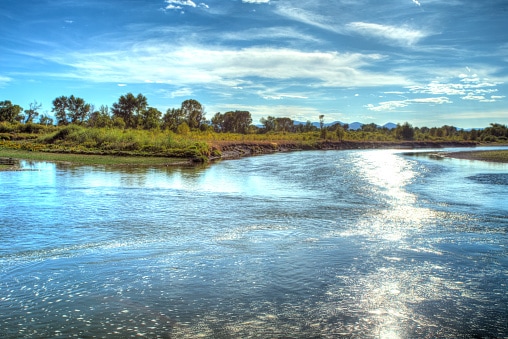
The Missouri Headwaters State Park in Three Forks Montana is where the Missouri River begins.
©highmountainphotography/iStock via Getty Images
Source
Every river has a source — the place where it begins — and the Missouri River is no different. In fact, the Missouri has three streams that rise to form its headwaters. They include Bower’s Spring, The Firehole River, and The Gallatin River.
Bower’s Spring eventually forms the Jefferson River, while the Firehole River joins with the Gibbon River to form the Madison River. The Missouri River officially starts in Missouri Headwaters State Park near Three Forks, Montana, where the Jefferson and Madison come together. The rivers are joined by the Gallatin about a mile downstream.
Fish
The Missouri River is home to dozens of species of fish, making it a prime spot for recreational fishing. There are plenty of spots to access the river in the seven states it runs through. Here are some of the most common creatures you might catch.
Blue Catfish
Blue catfish tend to be one of the most prevalent species in the Missouri River. These creatures enjoy scouring the murky floors of the river in search of fish and crustaceans to eat. Blue catfish are especially active at night, so anglers sometimes use smelly baits to attract them, according to an article from Washington University in St. Louis.

Blue catfish are extremely prevalent in the Missouri River.
©Thomsonmg2000, cropped and adjusted by Kostka Martin / CC0 – License
Smallmouth Bass
Smallmouth bass is one of Missouri’s most popular species of game fish. They can be found throughout the Ozarks and are attracted to a variety of bait such as worms, spinnerbaits, and crayfish. Smallmouth bass tends to make their nests in the pebbles of the shallows along the main current of whatever body of water they call home.
Silver Carp
The Missouri River houses this invasive species of carp, which can become extremely problematic. Silver carp are not native to Missouri and may have been introduced by farmers importing them to keep their ponds clean.
Carp breed plentifully and can grow to be very large. They have the potential to destroy entire river ecosystems as they devour smaller species and have few natural predators. Carp also threaten humans with their tendency to jump out of the water, in some areas, by the hundreds. For this reason, fishing for carp is encouraged in some parts of the river.
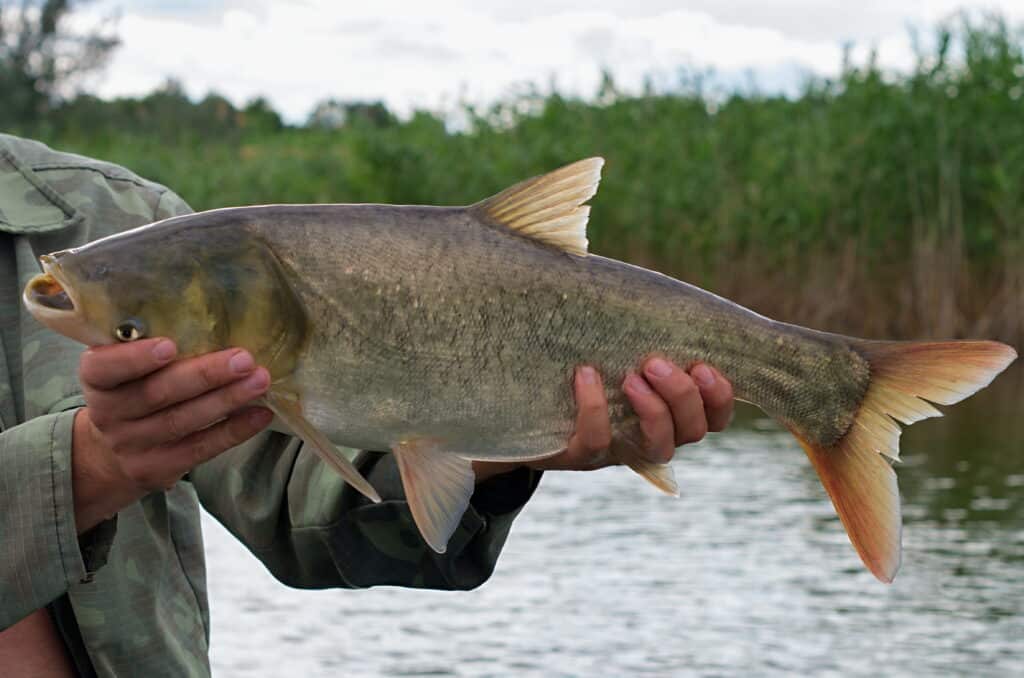
Silver carp are an invasive species in the Missouri River.
©Balakleypb/Shutterstock.com
Geology
Research suggests that the Missouri River dates back about 30 million years. However, its current course was created by glaciers diverting streams from the Rocky Mountains about 115,000 years ago.
The Upper Missouri River contains primarily sedimentary rocks that were deposited during the Cretaceous period of Geologic Time, according to Upper Missouri River Guides. Thousands of feet of sand, silt, clay, and lime hardened into the layered rock we see today, as well as some fossils of prehistoric organisms.
During The Tertiary Period, hot magma pushed its way up into cracks in the sedimentary rock. Some of the magma cooled to form veins of igneous rocks, called dikes and sills. The Upper Missouri River has also exposed white sandstone cliffs laced with a network of dark-brown igneous rock.
A tributary known as the Little Missouri River cuts through Theodore Roosevelt National Park. Their layers of shale and sandstone combine to produce the rugged terrain of the badlands.
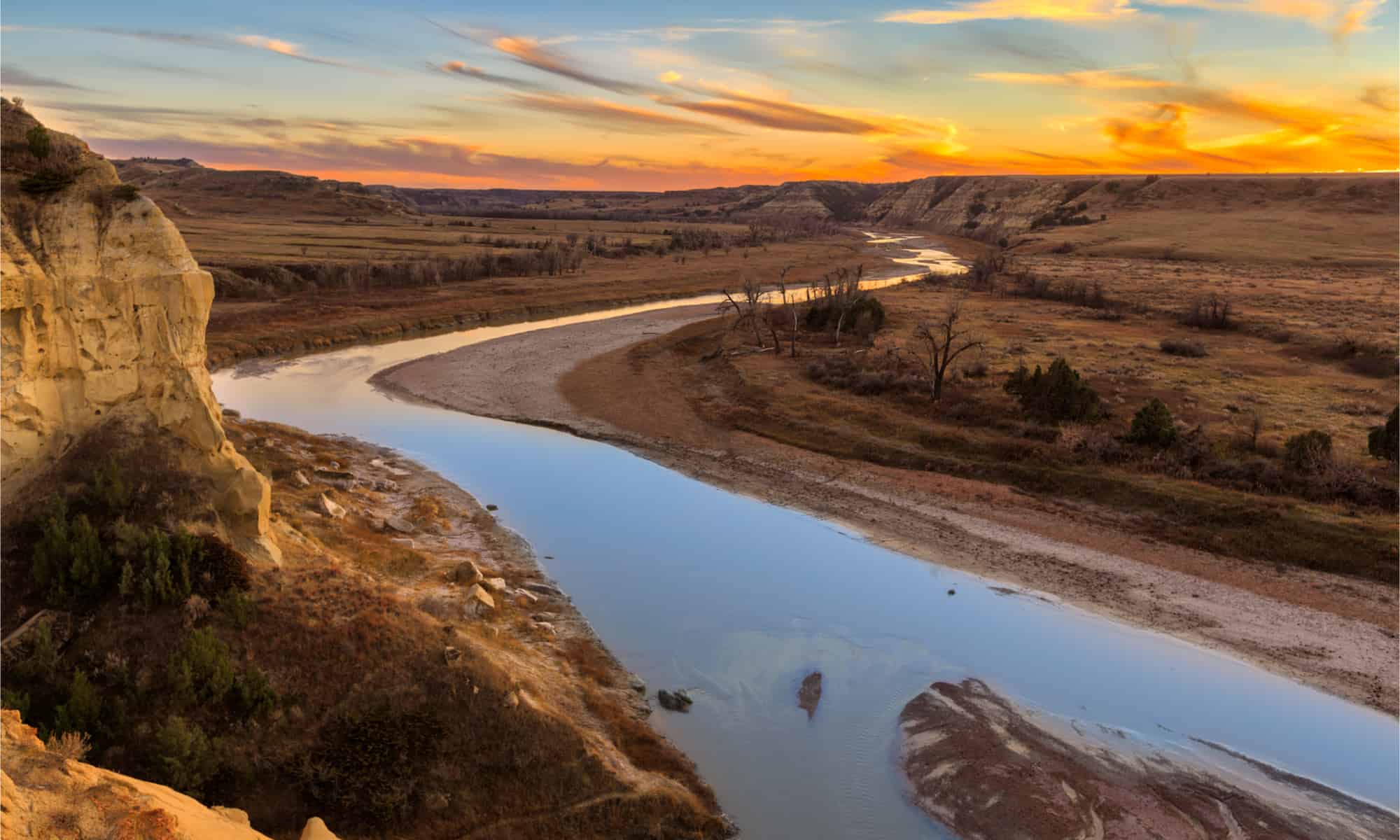
The Little Missouri River cuts through Theodore Roosevelt National Park in North Dakota.
©ZakZeinert/Shutterstock.com
Activities
Although the Missouri River has earned the nickname Big Muddy it isn’t especially “dirty,” in terms of pollution. However, due to fast currents and hidden dangers like holes, submerged rocks, and snags, swimming in the river is not advisable. Still, there are plenty of other worthwhile activities to do.
Fishing
As we already know, a variety of fish abounds in the Missouri River and there are dozens of locations for fishing all along the water. Evenings and early mornings tend to be the best time to get a bite. Look for deep holes located under bridges, below dams, on bends in the river, and downstream of sandbars.
Boating
Plenty of opportunities for boating exist on the Missouri River, from kayaking and canoeing to navigating the waters on a larger vessel. No matter how you choose to explore the river, be sure to wear a personal flotation device at all times.

Camping is allowed in many areas near the Missouri River.
©New Africa/Shutterstock.com
Hiking and Camping
There is no shortage of beautiful hiking spots to traverse on foot or by bike. One notable location is the Missouri Headwaters State Park, where the entire river begins. If you just can’t get enough of the great outdoors, camping is also allowed in many areas near the river.
Birding and Wildlife Viewing
The Big Muddy is also an ideal spot to observe birds and other wildlife. You may spot species such as the American bald eagle at the Karl Mundt National Wildlife Refuge. In other locations, such as the Charles M. Russell National Wildlife Refuge, commonly observed animals include whitetail deer, elk, and bighorn sheep.
The photo featured at the top of this post is © Stephanie A Sellers/Shutterstock.com
Thank you for reading! Have some feedback for us? Contact the AZ Animals editorial team.







